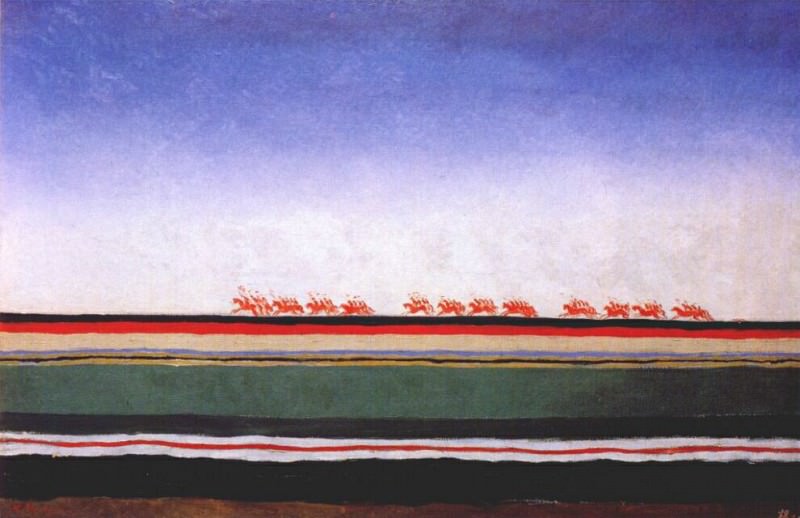malevich red cavalry 1930-1 Kazimir Malevich (1879-1935)
Kazimir Malevich – malevich red cavalry 1930-1
Edit attribution
Download full size: 990×640 px (0,1 Mb)
Painter: Kazimir Malevich
"Riding Red Cavalry" is one of Kazimir Malevich’s most famous abstract works. The exact date of composition is unknown. Approximate dating is 1928-1932. Difficulties with dating arise due to the fact that Malevich put early dates on most of his later works. For many years, this was the only painting by Malevich made in the abstract key, recognized by official Soviet art historians. This was largely due to its subject matter - the artist depicted events associated with the October Revolution.
Description of Kazimir Malevich’s painting The Red Cavalry
"Riding Red Cavalry" is one of Kazimir Malevich’s most famous abstract works. The exact date of composition is unknown. Approximate dating is 1928-1932. Difficulties with dating arise due to the fact that Malevich put early dates on most of his later works.
For many years, this was the only painting by Malevich made in the abstract key, recognized by official Soviet art historians. This was largely due to its subject matter - the artist depicted events associated with the October Revolution. The painting even had a date - 1918. However, the picture was created at least ten years later.
The painting is clearly divided into three equal parts. This is the land, the galloping red cavalry and the sky. In this work, Malevich most accurately conveyed the so-called golden ratio. The earth and the firmament are separated by a clear line of horizon, dividing the picture in the perfect proportion of 0.618 (earth: sky = sky: picture = 0.618). Such precision was very rare at the time of the painting, which is why a number of critics have used the canvas as an example to follow.
The cavalry are three separate groups, each with four separate riders. At the same time, due to the fact that each rider is "calculated," the illusion of four rows is created.
The lower part of the canvas is the land in section, rendered in twelve colors, which corresponds to the twelve red riders.
The center of the painting is offset to the right and downward. The space in front of the equestrians is twice as large as the space left behind. In this way Malevich conveys movement forward and upward, toward the perspective opened by the revolution.
"The Red Cavalry" is both a philosophical and mathematically rigorous painting. The images that are depicted on it, understandable to any viewer who looked at the painting more closely.
Кому понравилось
Пожалуйста, подождите
На эту операцию может потребоваться несколько секунд.
Информация появится в новом окне,
если открытие новых окон не запрещено в настройках вашего браузера.
You need to login
Для работы с коллекциями – пожалуйста, войдите в аккаунт (open in new window).



















You cannot comment Why?
Perhaps it’s a painting of a line of red, white, and green lines on a blue, green, black, and white background with a sky in the background.